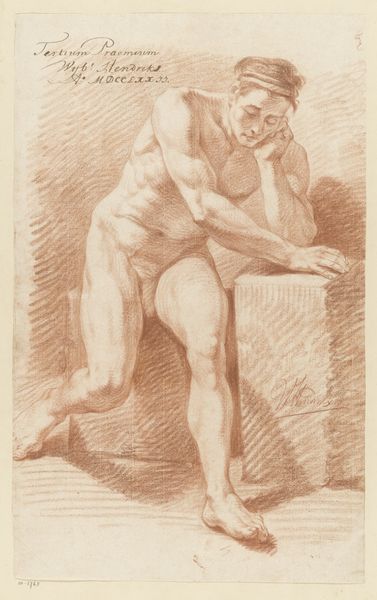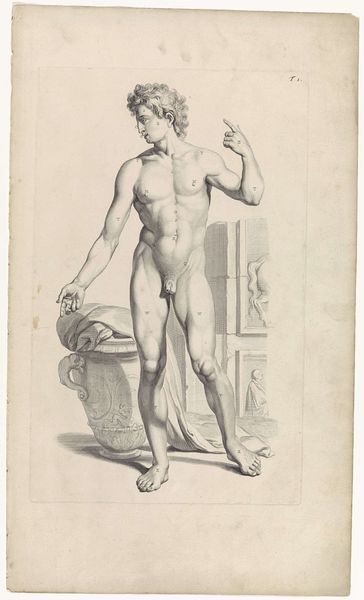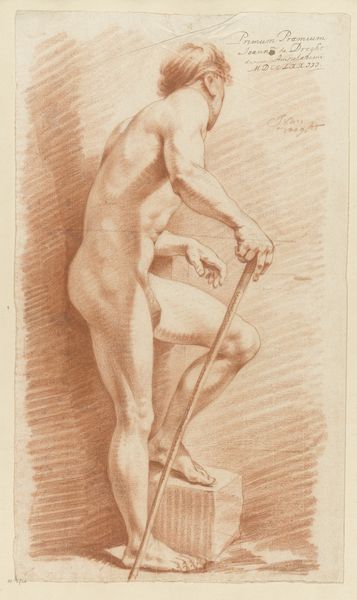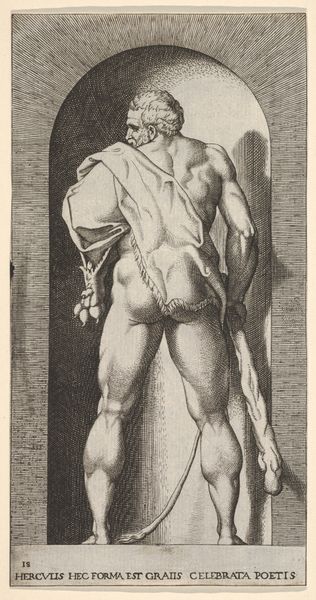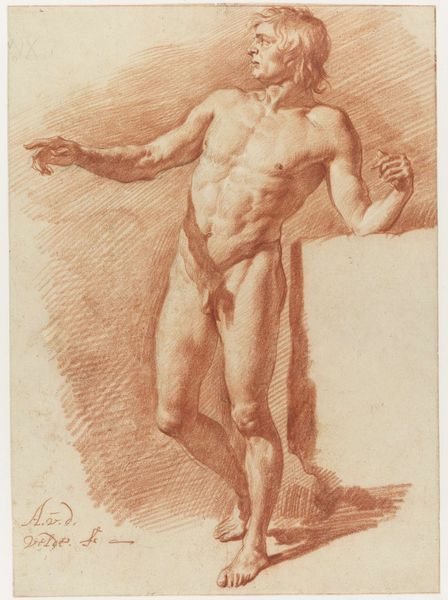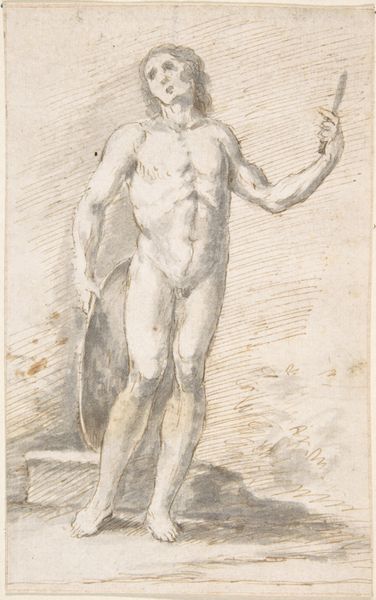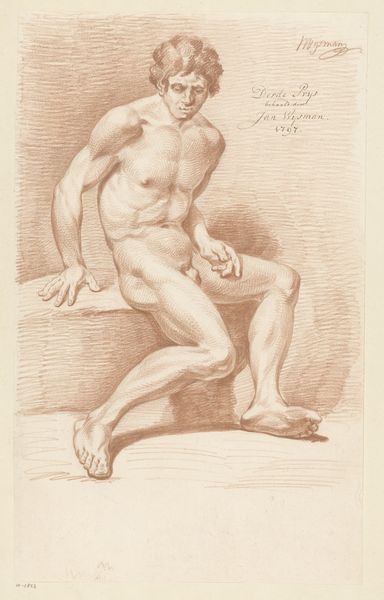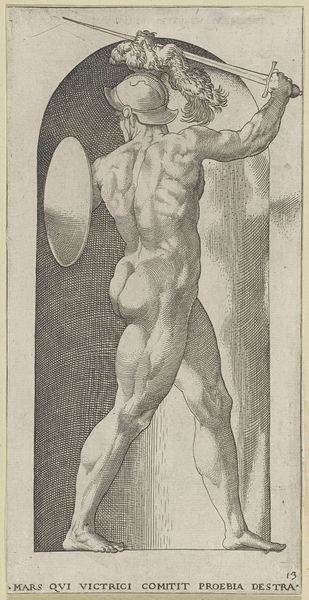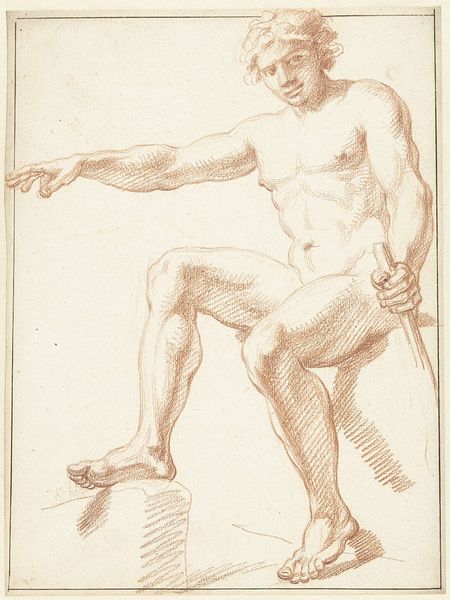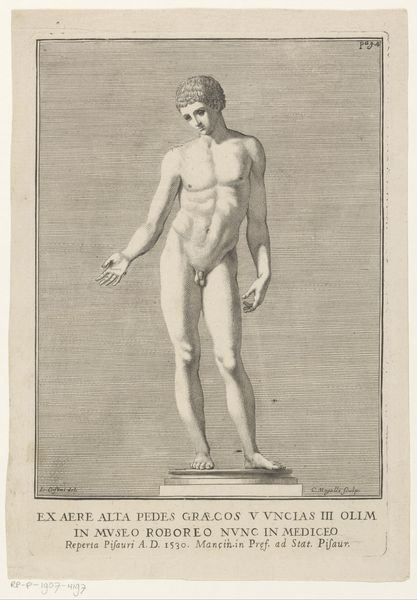
Staand mannelijk naakt, op de rug gezien (2e prijs 1769) Possibly 1769
0:00
0:00
drawing, pencil
#
drawing
#
landscape
#
classical-realism
#
figuration
#
pencil drawing
#
pencil
#
academic-art
#
nude
Dimensions: height 525 mm, width 337 mm
Copyright: Rijks Museum: Open Domain
Johannes van Dregt rendered this drawing in 1769. The nude male figure stands, back turned, in what seems to be a studio setting, a laurel wreath placed near his feet. This wreath, a classical symbol of triumph and honor, reappears across epochs, adorning emperors, poets, and athletes. Think of ancient Roman sculptures, where victors are crowned with laurel, or Renaissance paintings, where poets are immortalized with this emblem of glory. The arm raised may remind us of the gesture of acclamation in antiquity. Consider how such motifs transcend mere decoration. They tap into our collective memory, evoking primal associations of victory, status, and aspiration. The wreath's cyclical journey echoes through time, from the battlefields of antiquity to the art academies of 18th-century Europe, a silent witness to humanity's enduring quest for recognition and legacy. This echoes across time, subtly altering its meaning.
Comments
No comments
Be the first to comment and join the conversation on the ultimate creative platform.
